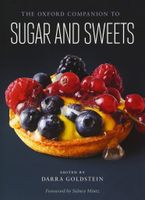Advertisement
New Food Trades
Published 2015
New food-related trades and guilds emerged during the late Middle Ages. Their main purpose was to acquire exhaustive rights to prepare and sell certain types of foods that had not previously been regulated. The genesis of the cookie trade offers an illuminating example. Bakers throughout medieval Europe baked many varieties of bread, white and dark, eaten by different classes in society. During important religious holidays, bakers used some of their best wheat flour for cakes and pastries that could be sold only with the permission of the municipal authorities. Wealthy patrons, however, ordered their bakers to make such dainties all year round, and gradually the demand grew so great that authorities found it impossible to limit their production outside of holidays. Thus, the cookie trade was born. In Paris, cookie makers (obloyers) were granted privileges in 1270, and their status was confirmed by the king in 1397 and 1406.


